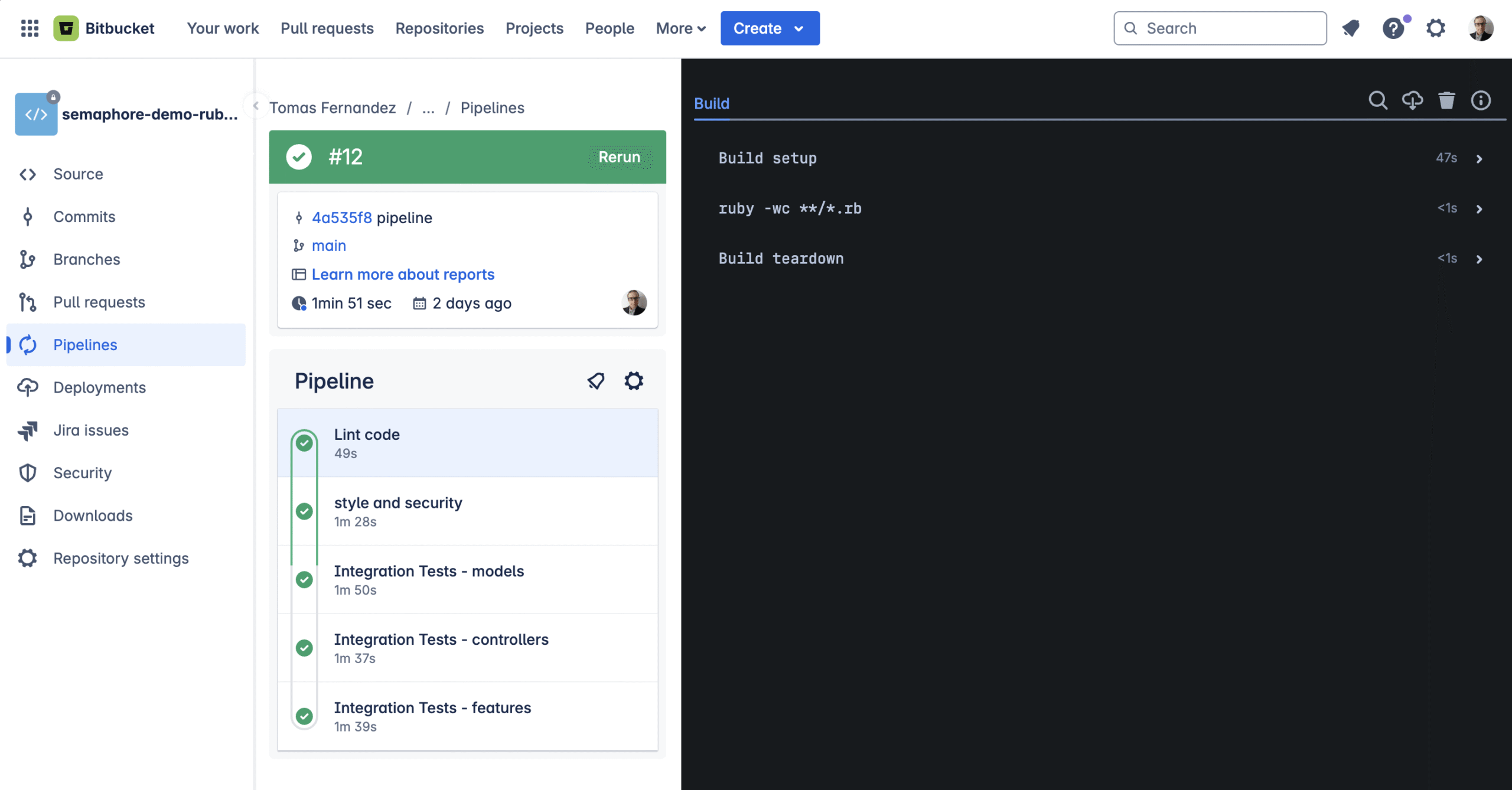One last time, this is the last one. Let’s compare Semaphore Community Edition (CE) to BitBucket Pipelines.
License and Source Availability
Bitbucket Pipelines is a closed-source product. While you can use it through Bitbucket Cloud, the on-premise editions of Bitbucket (Server and Data Center) do not include Pipelines at all. That means there’s no way to self-host Bitbucket Pipelines or access its internals since everything runs on Atlassian’s infrastructure, under a commercial license.
In contrast, Semaphore Community Edition (CE) is released under the Apache 2.0 license, a permissive open-source license that allows:
- Unlimited usage
- Redistribution
- Modification
You can run Semaphore CE on your own infrastructure, audit the source code, and even contribute back to the project. So if open source is a priority, Semaphore CE has a clear edge over Bitbucket Pipelines.
Free Plans and Trial Options
When it comes to getting started, Bitbucket Pipelines offers a limited free tier:
- 50 build minutes per month
- Enough for small projects or basic testing
- Once you exceed that, you’ll need to upgrade to a paid plan
To put that in perspective, even a simple Ruby on Rails demo project can eat up 20 minutes in just two hours—without deployment or heavy testing.
Semaphore, on the other hand, offers more flexibility:
- Free forever
- Self-hosted, no usage limits
- Just provide your own hardware or cloud infrastructure
If you don’t want to self-host, you can try Semaphore Cloud and get:
- 14-day free trial with unlimited minutes
- After the trial, you get a free tier with 7,000 minutes/month — that’s 140× more than Bitbucket’s free offering
Git Provider Support
Bitbucket Pipelines is tightly integrated with the Bitbucket ecosystem. That means:
- It only works with Bitbucket-hosted Git repositories
- You’re effectively locked into Atlassian’s suite: Jira, Confluence, Bitbucket, and Pipelines
This integration can be convenient, but it comes at the cost of vendor lock-in. If you ever want to migrate your code or CI/CD workflows elsewhere, it won’t be seamless.
In contrast, Semaphore Community Edition is designed for maximum flexibility:
- Built-in support for Bitbucket, GitHub, and GitLab
- You can even connect to custom self-hosted Git servers over SSH
With Semaphore, your CI/CD is decoupled from your Git provider, giving you the freedom to change platforms, adopt hybrid setups, or stay fully self-hosted.
Pipeline Creation and Feedback
YAML-Only vs Visual Editing
Bitbucket Pipelines uses a YAML-first approach.
- You define pipelines in a file called
bitbucket-pipelines.ymlat the root of your repo - Bitbucket offers some starter templates and helpful snippets
- But if you want to add caching, parallel jobs, or services, you’re deep in YAML territory
- As your pipeline grows, the YAML becomes harder to read and maintain
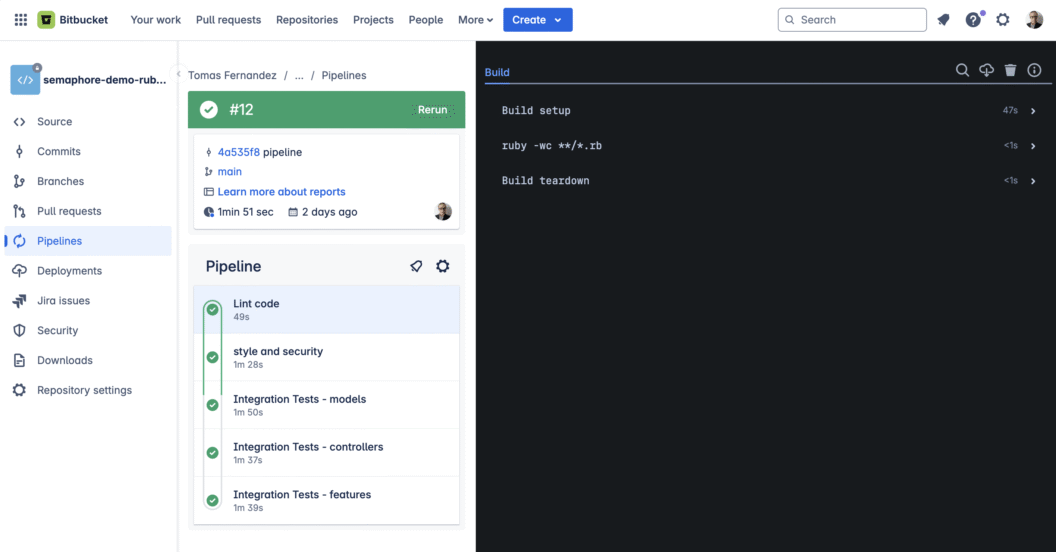
Semaphore also uses YAML under the hood, but with a major difference:
- You can define and manage your pipelines through a built-in visual editor
- No need to touch YAML unless you want to
- Every job is represented as a visual block—easy to read, modify, and debug
- Ideal for teams that want to onboard quickly or reduce config overhead
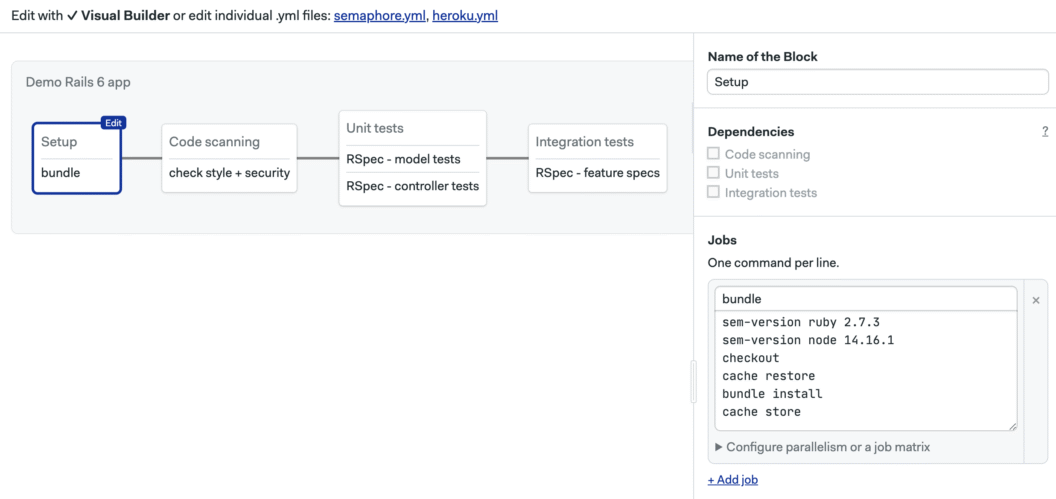
Real-Time Pipeline Feedback
When it comes to execution feedback, Semaphore stands out:
- You get a clear visual representation of your pipeline structure
- Jobs running in parallel are shown side-by-side
- You can watch logs in real time, see outputs, artifacts, and dependencies unfold as they run
- Great for spotting bottlenecks or debugging flaky tests
Test dashboards
Both Bitbucket Pipelines and Semaphore support JUnit-formatted test results, but the experience is very different.
Bitbucket Pipelines:
- Requires you to manually configure your jobs to export test results in JUnit XML
- Results must be saved to specific directories
- The Test tab only shows up to 100 failed tests per run
- No native dashboard for passed tests, performance trends, or detailed filtering
For advanced reporting (e.g. charts, graphs), you need to rely on third-party plugins from the Atlassian Marketplace.
Semaphore:
- Also uses JUnit XML for input
- Provides a built-in test dashboard out of the box
- Aggregates results across CI runs
- Includes helper scripts to auto-process results during pipeline runs
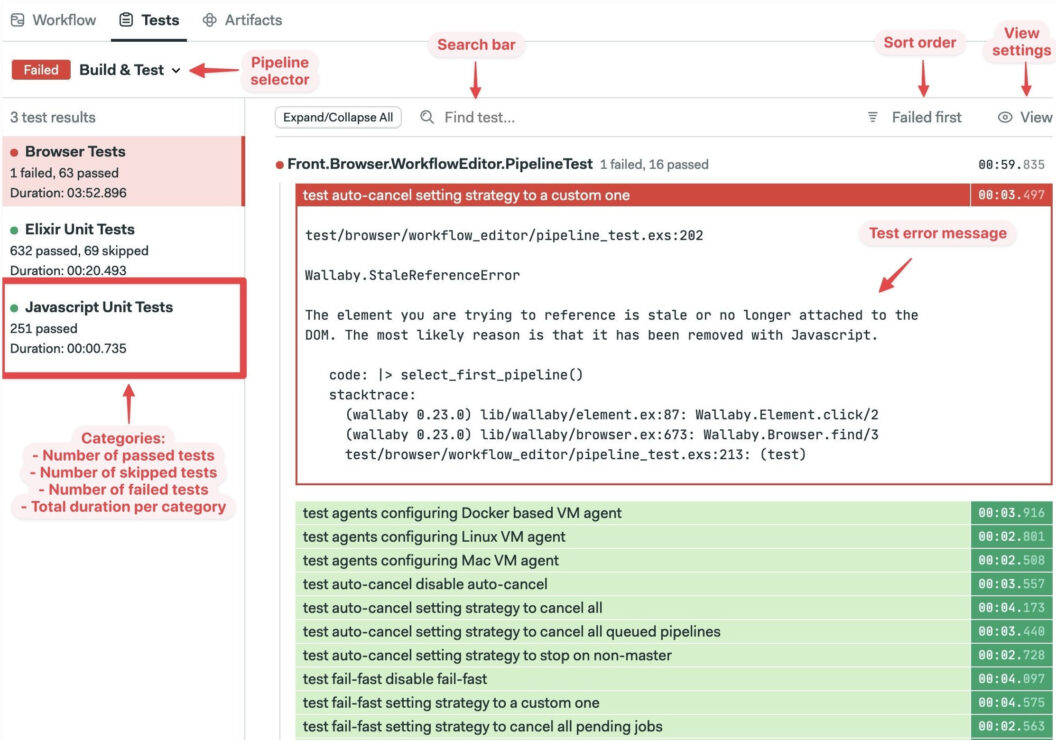
On top of that, Semaphore supports Markdown Reports:
- Custom reports rendered directly in the pipeline UI
- Supports full Markdown
- Even integrates Mermaid.js to render diagrams like Gantt charts or test flow graphs
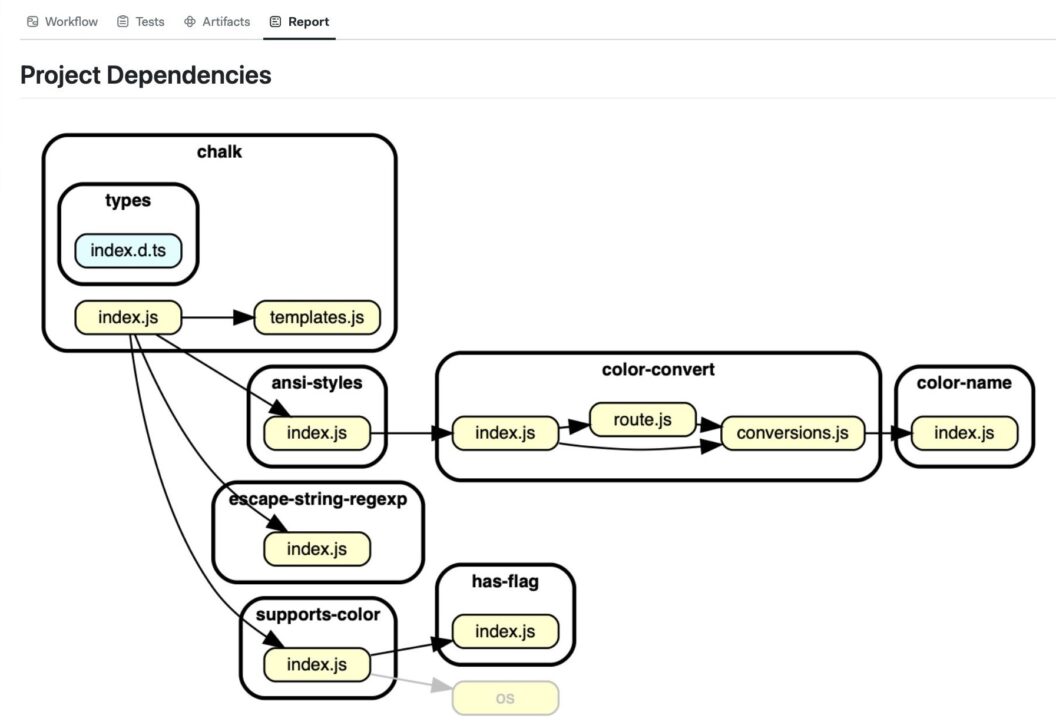
On-Premise Installation
If self-hosting is a priority, the difference between Bitbucket Pipelines and Semaphore is stark.
Bitbucket Pipelines:
- Cannot be self-hosted—it only runs in Atlassian’s cloud
- Bitbucket Server and Bitbucket Data Center (the on-prem editions) do not include Pipelines
- To run CI/CD on-premise, you’d need to integrate a separate tool manually (like Jenkins or Bamboo)
- This creates extra complexity and breaks the seamless setup Bitbucket Cloud users get
Semaphore Community Edition:
Semaphore CE has been built for self-hosting from the ground up
- Fully open-source, installable on your own servers or cloud infrastructure
- You bring your own Git server—Bitbucket, GitHub, GitLab, or any SSH-accessible repo
- Keeps your code and pipelines under your control, with no external dependencies
There’s also a self-hostable Enterprise Edition of Semaphore:
- Includes premium features like parameterized pipelines
- Commercial license, but free for small teams (under certain conditions)
Conclusion
Choosing the right CI/CD platform comes down to your priorities:
- Flexibility & Control
If you need self-hosting, open-source licensing, or the ability to swap Git providers, Semaphore Community Edition gives you complete ownership—free forever and with a rich feature set even at the free tier. - Ecosystem Integration
If you’re already deep into the Atlassian suite and want a tightly coupled experience with Jira, Confluence, and Bitbucket Cloud, Bitbucket Pipelines provides a streamlined, all-in-one solution—albeit with vendor lock-in and limited on-prem options. - Usability & Visibility
Semaphore’s visual editor, real-time pipeline feedback, built-in dashboards, and Markdown reports make it easier to build, monitor, and troubleshoot complex workflows without wrestling with YAML or marketplace plugins.
Ultimately, if software freedom, scalability, and deep pipeline insights matter most, Semaphore CE is the clear winner. But for teams prioritizing seamless Atlassian integration over portability, Bitbucket Pipelines still holds appeal. Choose based on which trade-offs align best with your team’s needs.
The post Semaphore vs BitBucket Pipelines appeared first on Semaphore.


